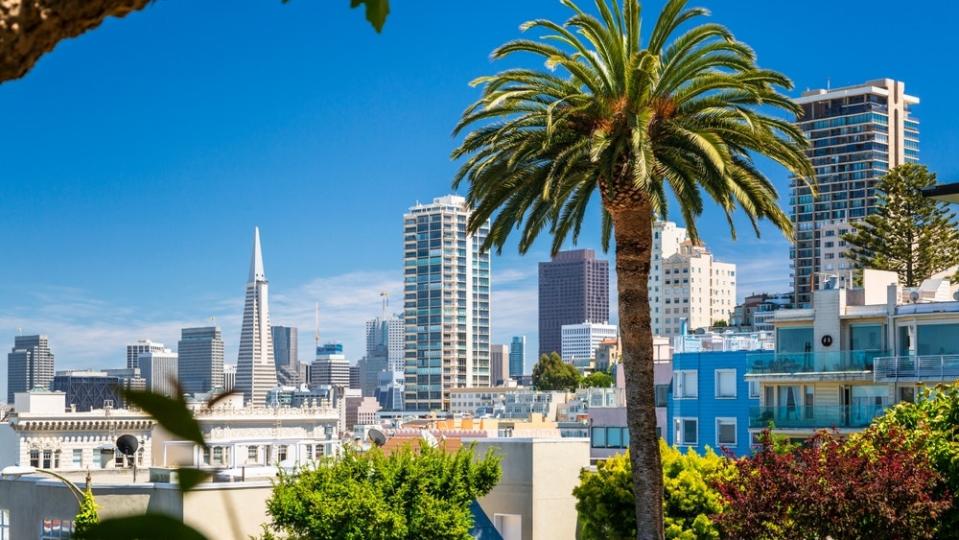Why San Francisco Has Only Granted 16 New Home Permits This Year

Despite years of claims from city officials that adding new home inventory is a public policy goal, San Francisco has granted just 16 new home construction permits in 2024. This comes against a backdrop of high homeless rates and median home prices in the $1,400,000 range, meaning a prospective buyer must make over $500,000/year to afford an average San Francisco home comfortably.
That price range is prohibitive, even by tech salary standards. Current Mayor London Breed made adding units to the city's housing inventory a campaign issue during her successful run for office. Yet, data from the U.S. Census Bureau's Study of the Cities Data Systems (SOCDS) Building Permit Database shows San Francisco has only approved 16 new building permits since January of this year. The unit breakdown is as follows:
· 7 Single-family homes
· 6 Duplexes
· 3 Fourplexes
A unit count that small is akin to rationing an extra ½ cup of water to a soldier before sending him on a desert mission. It won't make even a small dent in the inventory crisis that drives San Francisco's astronomically high real estate prices. City officials acknowledge that the new inventory numbers are insufficient; however, they believe the SOCDS data is somewhat misleading.
Don't Miss:
A new fund backed by Jeff Bezos offers a 7-9% target yield with monthly dividends. Here’s how you can invest today.
Private credit offers up to 20% APY to potential accredited investors looking to capitalize on this growing asset class.
They point out that the SOCDS data only includes "new" home construction on units built from the ground up, skewing the actual new inventory numbers. In a statement to Newsweek magazine, city officials said, "The addition of Accessory Dwelling Units in the basement of existing homes is not included, nor is new housing resulting from unit legalization or commercial to residential conversions.”
The SOCDS data is calculated at the federal level by the Census Bureau, and city housing authorities say, "They (the Census Bureau) have a narrow definition of housing that doesn’t account for all of the types of housing created in a dense, older city like San Francisco.” Even when considering that, it's safe to say the current administration isn't exactly "bringing home the bacon" when it comes to adding new units.
Patrick Hannan, the Communications Director for the San Francisco Department of Building Inspection, defended the city's efforts. In an interview with Newsweek, he said, "So far, in 2024, the Department of Building Inspection has only received four housing producing permit applications for new structures—three were for backyard cottage Accessory Dwelling Units and one was for a 75-unit affordable housing building.”
San Francisco's Planning Department also raised issues with the Census Bureau SOCDS data and informed Newsweek that they have approved 524 units thus far in 2024. In their defense, building in cities like San Francisco is notoriously expensive. Simply buying the land necessary to break ground on the large-scale developments that would alleviate the city's housing crisis can cost tens of millions of dollars.
Trending: Are you rich? Here’s what Americans think you need to be considered wealthy.
It was an expensive proposition 15 years ago after the financial crisis, but when today's interest rates are factored into the equation, the cost of building massive developments anywhere in the Bay Area is prohibitive. For developers, acquiring the land is only half the problem. San Francisco is a very politically active city, and that high level of civic engagement translates to numerous vocal constituencies who can stop a new building project in its tracks.
This explains why many major developers who could theoretically do big projects in San Francisco prefer to break ground in sunbelt cities where land is cheaper, and the regulatory environment is less restrictive. Despite that, Mayor Breed is still touting her administration's efforts to add desperately needed housing inventory. In June 2023, she proposed local legislation to reduce red tape-related delays that stymie new projects.
It was part of a plan to help San Francisco hit a state-mandated goal of adding 82,000 housing units by 2031. Unfortunately, the City Planners office confirms that plans were permitted to add only 1,823 in 2023, which is roughly 1,000 less than it permitted in 2022. That means San Francisco must radically outpace its current rate of development to hit the state's goal of 82,000 new units by 2031.
Keep Reading:
Warren Buffett once said, "If you don't find a way to make money while you sleep, you will work until you die." These high-yield real estate notes that pay 7.5% – 9% make earning passive income easier than ever.
Elon Musk and Jeff Bezos are bullish on one city that could dethrone New York and become the new financial capital of the US. Investing in its booming real estate market has never been more accessible.
"ACTIVE INVESTORS' SECRET WEAPON" Supercharge Your Stock Market Game with the #1 "news & everything else" trading tool: Benzinga Pro - Click here to start Your 14-Day Trial Now!
Get the latest stock analysis from Benzinga?
This article Why San Francisco Has Only Granted 16 New Home Permits This Year originally appeared on Benzinga.com
© 2024 Benzinga.com. Benzinga does not provide investment advice. All rights reserved.

 Yahoo Finance
Yahoo Finance 